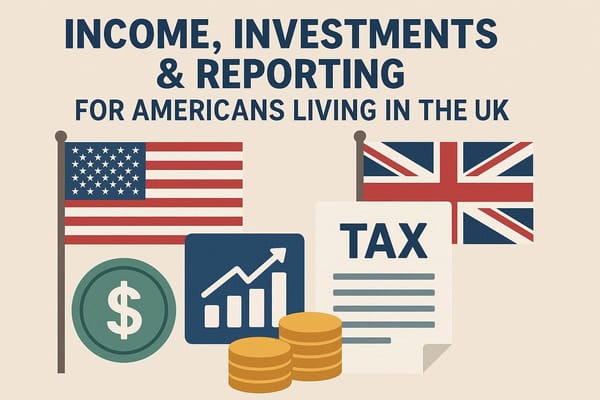Stamp Duty Land Tax (SDLT) in the UK: How does it work?
Stamp Duty Land Tax (SDLT) is a tax levied on the purchase of property and land in the UK. It is paid by the purchaser and varies depending on the property price, type, and the buyer's circumstances. The tax is applicable in England and Northern Ireland. Separate systems apply in Scotland (Land and Buildings Transaction Tax) and Wales (Land Transaction Tax).
Current SDLT Rates (as of 2024)
The standard SDLT rates for residential properties in England and Northern Ireland are as follows:
- Up to £250,000: 0%
- £250,001 to £925,000: 5%
- £925,001 to £1.5 million: 10%
- Above £1.5 million: 12%
For non-residential properties, the rates are:
- Up to £150,000: 0%
- £150,001 to £250,000: 2%
- Above £250,000: 5%
Additional 3% Surcharge
An additional 3% SDLT surcharge is applied to purchases of additional residential properties, such as buy-to-let properties and second homes. This surcharge has been a significant aspect of the UK property market since its introduction in April 2016. It’s important to note that all properties, not just those in the UK, are taken into account for the SDLT surcharge. This includes properties owned jointly or partially by any of the buyers, anywhere in the world.
There is however an exemption for people selling their main residence and buying a new one. And if you’ve paid the SDLT surcharge when purchasing a new main residence before selling your previous main residence, you can apply for a refund for the extra tax if you sell your old main home within three years. You need to make this refund request within 12 months of selling your old home, or within 12 months of the due date of your SDLT tax return, whichever is later.
Challenges of the Additional 3% Surcharge
- Financial Burden on Investors: The additional 3% surcharge significantly increases the upfront costs for property investors. For instance, a property costing £300,000 would incur an additional £9,000 in SDLT due to the surcharge, totalling £14,000 in SDLT instead of £5,000 under the standard rate.
- Market Impact: This surcharge has dampened demand in the buy-to-let market and among those purchasing second homes. The increased cost has led to a slowdown in the purchase of these properties, affecting the overall market dynamics.
- Administrative Complexity: Determining whether the surcharge applies can be complex. Buyers must navigate rules about replacing main residences and considerations around property ownership structures. Misinterpretation can lead to unexpected costs and potential penalties.
- Impact on Limited Companies: The additional 3% applies to properties purchased by limited companies, even if it's the company’s first property. This impacts corporate investors and necessitates careful financial planning to manage increased acquisition costs.
First home purchase
You can claim a discount (relief) if the property you buy is your first home. This means you’ll pay:
- no SDLT up to £425,000
- 5% SDLT on the portion from £425,001 to £625,000
You’re eligible if you and anyone else you’re buying with are first-time buyers. Please note that if you sell your properties and buy a new one, this would not be considered your first home.
If the price is over £625,000, you cannot claim the relief. Follow the rules for people who’ve bought a home before.
Non Resident buyer 2% Surcharge
If you’re not present in the UK for at least 183 days (6 months) during the 12 months before your purchase you are ‘not a UK resident’ for the purposes of SDLT. Please the criteria is not the same as the one used to decide UK tax residence which uses a different test called the Statutory residence test.
Corporate buyers are non-UK resident if they are not UK resident for Corporation Tax purposes at the effective date of the transaction.
Special rules apply to UK resident companies which are under the direct or indirect control of non-UK resident persons. Such companies are treated as non-resident in relation to the transaction if the company:
- is a close company
- meets the non-UK control test in relation to the transaction
- is not an excluded company
You’ll usually pay a 2% surcharge if you’re buying a residential property in England or Northern Ireland. You may not have to pay a surcharge on certain properties, transactions or if you’re a particular type of buyer. Check the rules on who has to pay the surcharge, when you do not have to pay, and if you can claim relief.
If you have to pay the surcharge, you’ll also have to pay any other rates of SDLT that apply, for example:
- if you already own a property and you’re buying an additional property (you'll then end up with a 5% surchage in total)
- if you’re a first-time buyer
- if your purchase through a corporate entity
SDLT Rates for Limited Companies
When a limited company purchases residential property, it is subject to the same SDLT rates as individuals, but with the additional 3% surcharge always applicable. Moreover, there is a higher rate of SDLT for certain transactions:
For properties over £500,000: A 15% flat rate SDLT is charged on residential properties over £500,000 if they are purchased by a company or other non-natural person. This is intended to deter the use of corporate structures for property investment and ownership, which can sometimes be used for tax avoidance.
However, exemptions to the 15% rate include:
- Property developers and traders purchasing properties as part of their trade.
- Properties that are rented out on a commercial basis.
- Certain other circumstances as specified by HMRC.
Quick Stamp Duty Calculator
Here is a simplified calculator that can give you an estimate of your stamp duty due on the purchase of a property in the UK.
Please note that this calculator is basic and you should always use the official calculator from HMRC for precise results (even though there are instances where the HMRC calculator will make mistakes).
Mitigating the Impact of SDLT
Property buyers can adopt several strategies to mitigate the impact of SDLT:
- First-Time Buyers Relief: First-time buyers can benefit from reduced SDLT, paying no SDLT on properties up to £425,000 and reduced rates on properties up to £625,000.
- Main Residence Replacements: If replacing a main residence, buyers may be eligible for a refund of the 3% surcharge if they sell their previous main residence within three years of the new purchase.
- Careful Property Planning: Investors should carefully plan their purchases, considering the total cost including SDLT and potential returns, to ensure that investments remain viable despite the additional tax burden.
- Utilizing Corporate Structures: While purchasing through a limited company incurs the 3% surcharge, there can be long-term tax benefits in terms of capital gains tax and income tax, particularly for higher-rate taxpayers. It’s essential to seek professional advice to optimize the overall tax position.
Conclusion
Stamp Duty Land Tax (SDLT) remains a crucial consideration in the UK property market. The introduction of the additional 3% surcharge has introduced complexities and increased costs for buyers of additional properties and limited companies. While it has had a cooling effect on the buy-to-let market, careful planning and professional advice can help mitigate some of its impacts. Understanding the SDLT landscape is essential for anyone involved in property transactions in the UK.



